Sinclair ZX Spectrum
games list! |
| Total reviews! |
Handheld: 57 16/32bit Computers: 830 8bit Computers: 416 8bit Consoles: 58 16bit Consoles: 78 32/64bit Consoles: 107 128bit Consoles: 28 |
| OnLine members |
| Currently: 16 |
 |
| Best on 8bit micro! |
International Karate + - Commodore64 Xyphoes Fantasy - AmstradCPC Arkanoid II - AmstradCPC Pang - AmstradCPCPlus Wrath of the Demon - Commodore64 Night Hunter - AmstradCPC Barbarian - AmstradCPC Prince of Persia - SamCoupe Lemmings - SamCoupe |
| Best on 16bit micro! |
Turrican II - Amiga Shadow of the Beast - Amiga Jim Power - Amiga Agony - Amiga Turrican 2 - AtariST Project X - Amiga Super Frog - Amiga Flashback - Amiga Dark Seed - Amiga Flashback - Archimedes Warlocks - Archimedes Cannon Fodder - Amiga Turrican II - PC Universe - Amiga Hurrican - PC Tyrian - PC Super Stardust - AmigaAGA Pac-Mania - X68000 |
| Best on 8bit consoles! |
Pac-Mania - MasterSystem The NewZealand Story - MasterSystem Pang - GX4000 Batman Return of The Joker - nes Battletoads & Double Dragon - nes |
| Best on 16bit consoles! |
Jim Power - snes Donkey Kong Country - snes Aladdin - snes Comix Zone - Megadrive Alien Soldier - Megadrive Blazing Lazers - pcengine Raiden - pcengine Super Star Soldier - pcengine |
| Best on 32bit consoles! |
G-Darius - psone Super Mario 64 - n64 ISS Pro Evolution - psone Perfect Dark - n64 Dino Crisis 2 - psone Resident Evil 2 - psone Metal Gear Solid - psone Oddworld: Abe - psone Klonoa: Door To Phantomile - psone Medievil - psone Nights Into Dreams - Saturn Flashback - CDi |
| Total hits! |
| Puzzle! |
 |
| Random Old Ads! |
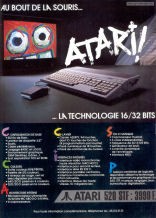 |
| ||||||||||||||||||||||||||
| ||||||||||||||||||||||||||
| ||||||||||||||||||||||||||
 STORY / GAMEPLAY STORY / GAMEPLAY The story takes place in a destroyed city, after a nuclear war. You are a commando and try to reach an airdrop platform called XV-238 in order to survive! The game is split into two different parts. On the first part you are wandering around the city's streets and defend yourself from every attacking enemy by using your martial arts techniques. But you must be careful because there are some enemies hiding inside buildings and throw hand grenades at you! Towards the end of the first part, you find a big boss, a man that's a few feet taller than you and will prevent you from ending the part. Of note: The game's hero looks much like the great 80s action movies actor, DOLPH LUNDGREN! On the second part, you roam in the railway station of the city's underground transport but this time you have the extra advantage to use a weapon that looks like some kind of a Sci-Fi machine gun and will surely make your life much easier. Actually, no! This time the enemies are not humans! You'll have to combat against robots, flying machines and computer controlled machine guns! After The War is a great action game, although it's frustratingly difficult to play! GRAPHICS / SOUND As in all the other 8bit versions, After The War offers some nice and detailed visuals. On the Sinclair Spectrum version, the sprites and the backgrounds are nicely done and look almost identical to the CPC counterpart (except of the color palette, since this version is in black and white). The game features large sprites but the frame rate is pretty low! Comparably, among the 8bit versions, the Commodore 64 version looks and plays better mainly because of its smoother sprite animation and background scrolling. Regarding the game's sound, there is nothing special as it features a few "dull" sound effects and no music at all (while the CPC and C64 versions at least offer a nice intro music score). | ||||||||||||||||||||||||||
 |
| ||
| ||
| ||||||||
|
|
| ||||||
| ||
ZX Spectrum
| ||
| read more... | ||
| The ZX Spectrum (default) color palette | ||
 | ||
| 3bit RGBi 15-colors palette (15 on screen) | ||
| ||
| No comments added yet | ||
| Login to leave your message! |
| Our featured games |
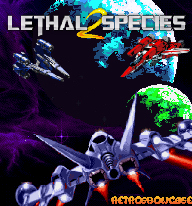 |
| Play old-school now! |
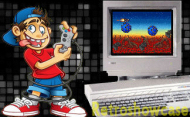 |
| Music Player! |
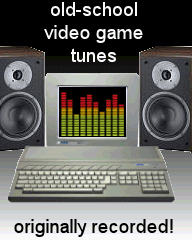 |
| Play ZX on-line!! |
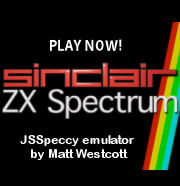 |
| Play CPC on-line!! |
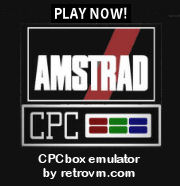 |
| Boot Screens! |
 |
| Retro-games Trivia! |
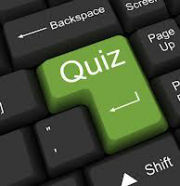 |
| Old-school Crossword! |
 |
| Is this my palette? |
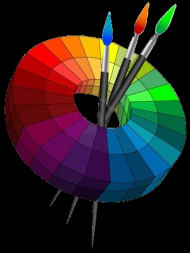 |
| The logo evolution! |
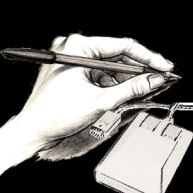 |
| Manuals! |
 |
| Beat them All! |
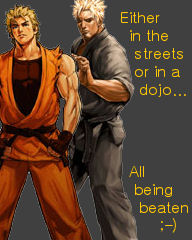 |




 7.0
7.0 5.0
5.0 6.0
6.0






 CPU: Z80 @ 3.5 MHz
CPU: Z80 @ 3.5 MHz